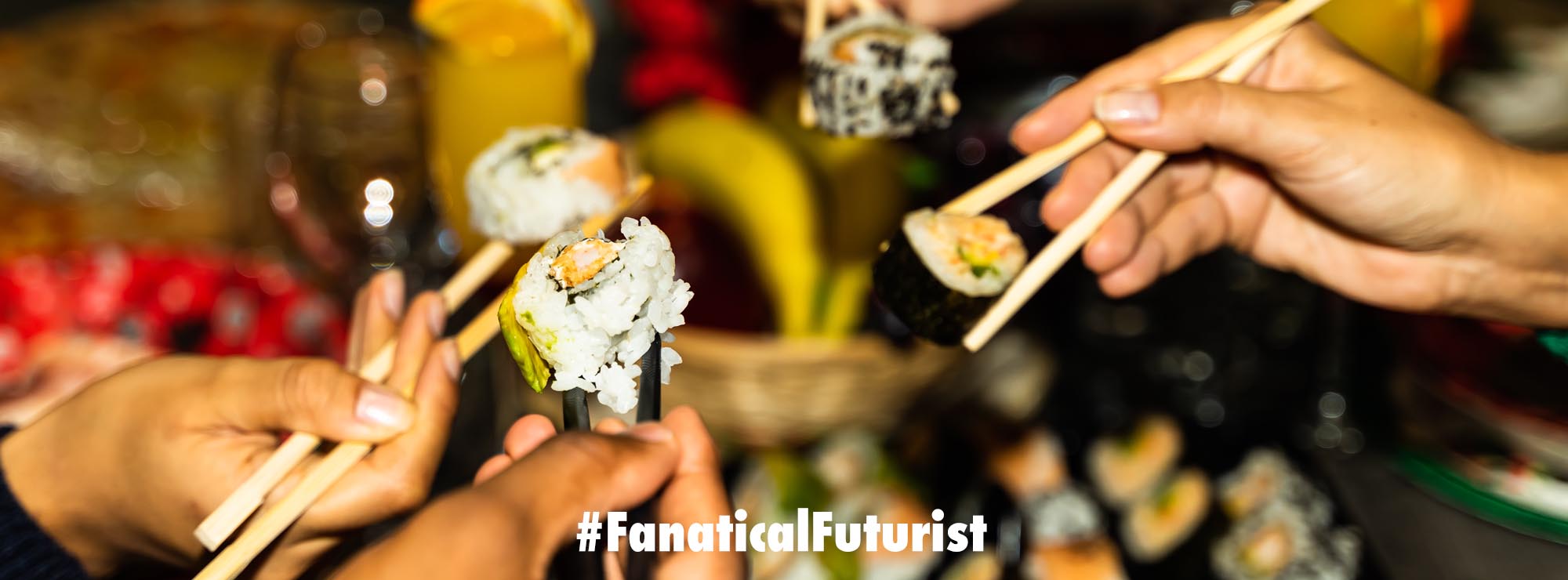
WHY THIS MATTERS IN BRIEF
On the one hand these could help people eat healthier by changing the flavour of food to make it taste nicer, on the other they could have applications in the metaverse …
 Love the Exponential Future? Join our XPotential Community, future proof yourself with courses from XPotential University, read about exponential tech and trends, connect, watch a keynote, or browse my blog.
Love the Exponential Future? Join our XPotential Community, future proof yourself with courses from XPotential University, read about exponential tech and trends, connect, watch a keynote, or browse my blog.
While this might seem like an odd story I thought it was interesting because it’s a good demonstration of how in the future we might be able to use technology to adjust the taste of our food, which then means that we may have a new way to make dull tasting healthy foods taste awesome. It could also be used to help us taste virtual foods in the metaverse – something that researchers in Japan are already working on – or even make 3D printed sushi taste better …
Low-salt food without a flavor penalty could soon be on the menu. Japanese food and beverage giant Kirin has partnered with Meiji University researchers to demonstrate a set of electric chopsticks that can boost people’s perception of saltiness.
The Future of Food, by keynote speaker Matthew Griffin
Most people in the USA eat too much salt – an average of around 3,600 mg per day as compared to US government dietary guidelines that recommend no more than 2,300 mg – and many suffer hypertension and related health issues as a result. The Japanese are apparently even naughtier, according to a 2015 study that put their national average around 4,200 mg per day.
See the new sticks in action!
Salt-reduced foods are easy enough to find, but they can be a bit of a sad experience; salt does some heavy lifting in terms of bringing out and enhancing other flavors. What’s missing is a way to make food taste salty without actually being salty, and that’s what Kirin seems to believe it’s figured out.
Working with researchers at Meiji University’s Miyashita Laboratory, the Kirin team has developed a set of flavor-enhancing chopsticks that use electrical stimulation waveforms to alter the perceived flavor of food when people use them to eat.
Exactly how this works is not well explained. The company says the “electric taste sensation” system pairs one regular chopstick with another that’s connected to a wrist-worn power supply and control computer. According to a press release, the system “uses very weak electricity – not enough to affect the human body – to adjust the function of ions such as sodium chloride … and sodium glutamate … to change the perception of taste by making food seem to taste stronger or weaker.”
In a very short video interview with the Guardian, Homei Miyashita, developer of the device, elaborated a little: “that computer uses electricity to float and suck the sodium ions in the food that you are eating.” A further diagram would appear to show that the device uses a small (-0.5 A) negative current to prepare the food, which boosts saltiness when it stops, and a small (0.5 A) positive current just as you’re popping the food in your mouth to take the effect further.
Perhaps, then, it’s pulling the sodium ions to the surface of the food where they’ll interact most effectively with your taste buds. Either way, it seems to be effective. In tests run on 36 men and women aged 40-65, the “electric taste sensation” was found to boost the perception of saltiness by about 1.5 times.
Gel “food” samples were given to participants, with precisely measured salt levels representing “normal” salted food and a reduced-salt version with some 30 percent less salt in it. When the device was turned on, subjects rated the reduced-salt food as slightly saltier than the “normal” food, on a “saltiness intensity evaluation point” scale.
As more of a real-world example, the researchers tried the same test using reduced-sodium miso soup, and reported “the salty taste enhancement effect was confirmed, and the participants commented that they felt an improvement in richness, sweetness, and overall tastiness.” As to how exactly the subjects managed to eat soup with chopsticks, the Guardian video appears to show Miyashita drinking from the bowl with the chopstick tips submerged in the soup.
Fascinating stuff. As to where it goes from here, the research team says it “aim[s] to use the results of this joint research to provide both mental satisfaction from a richer perceived taste along with health benefits derived from nutritional aspects for those who follow a low-sodium diet.” Kirin, for its part, will “continue to develop new services that support lifestyle disease prevention by increasing dietary satisfaction to make consumers’ diets tastier, more enjoyable, and healthier.”
So who knows, some sort of product may come out of this. I’m curious to give it a shot and learn more about its effectiveness and limitations.
Source: Kirin Holdings